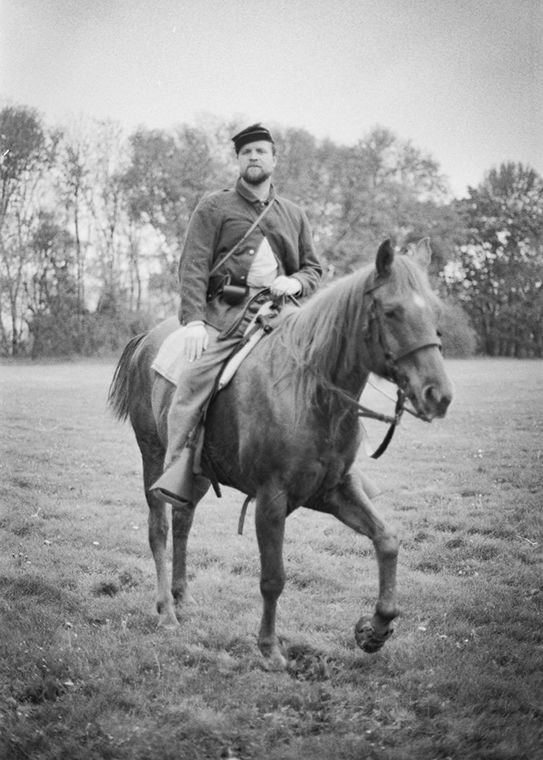Columbia should not abandon analog photography
A reenactor rides a horse at the 2017 Neshaminy State Park Civil War Reenactment in Bensalem, Pennsylvania. Made with 35mm film, this image was part of a larger project documenting the annual event.
September 10, 2018
When I began taking photos, I shot digital. When I learned how to make photos, I shot film.
Film taught me to appreciate photography as more than just capturing frames of action. Photography is an art form. I hoped to continue learning that art at Columbia in a way that would help me understand the medium’s history. When I arrived, I found a keyboard, a mouse and Adobe Creative Suite.
Columbia often feels like a trade school: “here is how to do this” vs. “here is how to make this.” Students should be given the chance outside the History of Photography course to learn how and why images are made.
I do not claim to be an expert on photography, analog or digital. I am speaking from experience in collegiate photography programs with vastly different mentalities. When I attended The University of the Arts in Philadelphia, the curriculum started with methods in viewing images, followed by analog photography processes. Digital photography was on the back burner and hardly present in the classroom. Students were required to learn the rules before breaking them.
The argument in favor of teaching film photography is echoed nationwide. The renowned photography program at the University of Southern California’s Roski School of Art and Design puts antique processes at the forefront of its curriculum. A description of its introductory program states that “basic 35mm-camera functions as well as black-and-white analog procedures are the main technical emphases of the course.”
Craig Stevens of Savannah College of Art and Design argued in American Photo Magazine that film photography makes students more deliberate in their image-making.
While Columbia still offers film and experimental photography courses, the majority of the program is based on digital.
I am aware of the costs that may prevent schools from teaching analog photography programs. The equipment necessary to build and maintain a functioning darkroom is expensive, not to mention a standard roll of film costs about $9.
If the program is too costly, Columbia could teach only the philosophy of analog photography.
Giving students a 1 GB card and telling them to come to class with 36 images could eliminate film costs. Teaching restraint when making images could lead to better photos and fewer missed shots. Teaching patience and self-control when culling images could give students a better body of work.
In the same vein as any technological process, photography has evolved quickly and considerably in its short existence. Perhaps Columbia is ahead of that evolutionary curve and made the right decision in consolidating darkrooms. Even though digital photography continues its industry takeover, I would still take that sweet smell of stop bath over the blue light of my Mac.








